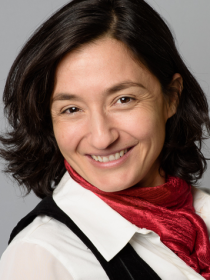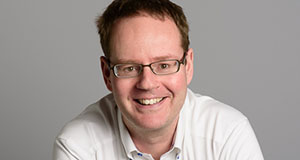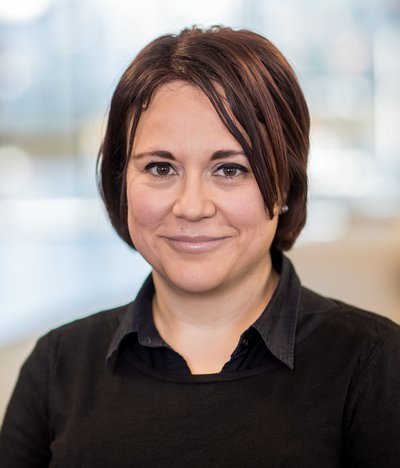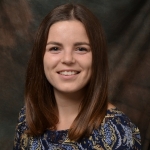Welcome to the website of the annual Francken Symposium! This year's theme will be 'Photovoltaics' with the slogan "Illuminating the Future". During this event speakers will deliver lectures about the physics behind the Photovoltaics and its possible advances in the future.
Photovoltaics have been a research topic for decades, however, over the past decade it has seen a remarkable evolution, characterized by rapid technological advancements, significant cost reductions, and a substantial increase in global installation capacities. The focus has been on enhancing the efficiency, durability, and manufacturability of solar cells and modules, alongside integrating them into a wide range of applications, from residential rooftops to large-scale solar farms and even wearable technology. With ongoing innovations and policy support, the future of photovoltaics appears bright, promising to play a pivotal role in meeting the world's growing energy needs while addressing climate change challenges.
As an organization, we welcome you to join us on the 21st of May 2024 for an exciting and informative day on the subject surrounded by experts in the field.
The price for attending is €7.50 for Francken members and €10.00 for non-Francken members. The first 110 spots are guaranteed, so sign-up fast! After these are gone attending might not be possible or it might be slightly more expensive.
Maria Loi
TBA
TBA
TBA
TBA
TBA
TBA
Dennis Francke

Maria Antonietta Loi studied physics at the University of Cagliari in Italy where she received the PhD in 2001 for a thesis on Photoexcitations and Interchain Interactions in Conjugated Oligomers and Polymers which was carried out in the group of Prof. G. Bongiovanni and A. Mura. In the same year she joined the Linz Institute for Organic Solar cells, of the University of Linz, Austria as a postdoctoral fellow. Later she worked as researcher at the Institute for Nanostructured Materials of the Italian National Research Council in Bologna, Italy. In 2006 she became assistant professor and Rosalind Franklin Fellow at the Zernike Institute for Advanced Materials of the University of Groningen, The Netherlands. She is now full professor in the same institution and chair of the Photophysics and OptoElectronics group.
She has published more than 240 peer-reviewed articles on photophysics and optoelectronics of different types of materials. The main interest is unravelling the properties of novel semiconductors and to tune their properties to fabricate highly performing optoelectronic devices (Solar cells, LEDs, Photodetectros etc.)

Description coming soon...

Adriana Creatore is Professor in the Plasma and Materials Processing group. Her research, built upon the knowledge and expertise in low pressure plasma chemical vapor deposition (CVD) of thin films, now includes other deposition approaches, such as initiated-CVD and atomic layer deposition (ALD). Currently, Adriana is focusing her research on atomic scale processing for next generation energy technologies. The aim is to design and engineer thin films and interfaces at the nanoscale by means of atomic layer deposition, toward efficient and selective transport of charges in the next generation of energy conversion and storage technologies. Selected examples are thin film (e.g. organo-metal halide perovskite) solar cells, photo-electrocatalytic cells (e.g. sun-driven fuel production) and 3D all- solid state batteries (e.g. Li-ion based). These application areas are investigated in close collaboration with international academic partners, research institutes and industry.

The current energy and climate challenges make the transition to a sustainable and renewable energy model increasingly necessary. Solar energy conversion through the development of efficient solar cells is a promising solution. As the materials used in solar cells play a crucial role in determining their performance, materials science, combining disciplines such as physics, chemistry and engineering, assumes a crucial position in driving advancements in this field.
In this talk, we will discuss the fundamental principles behind solar cells, exploring their structure, fabrication methods, key challenges, and ongoing research efforts aimed at addressing these challenges from a materials science point of view. We will highlight our latest advancements in the development of transparent electrodes and contact layers for solar cells and vacuum-deposited halide perovskites for application in photovoltaic technologies.
In the first part of the talk, we focus on the recent developments on transparent electrodes and contact layers for high efficiency solar cells. Specifically, we discuss how the microstructure of the transparent conductive oxide (TCO) impacts the electronic properties of hole selective contact layers for perovskite solar cells, using the case example of Sn-doped In 2 O 3 (ITO) and self-assembled monolayers (SAMs).
In the second part, we'll shift our attention to the growth of metal halide perovskites for solar cells, with a particular focus vacuum-based deposition of these perovskites. We'll discuss the potential of Pulsed Laser Deposition (PLD) as an alternative vacuum, vapor-based deposition technique for precisely tailoring complex metal halide perovskite thin films. We will also discuss recent development on the fabrication of perovskites by hybrid vacuum and solution processes. All this with the motivation of future application in perovskite-based tandem devices.
These advancements represent crucial steps towards controlling growth processes and ensuring the future scalability of materials used in efficient photovoltaic devices.




These days, a small USB stick costing only €10 can hold up to 16 GB of data. In hospitals, a camera the size of a pill can be swallowed to survey a patient's intestines. Modern pacemakers, critical devices that control abnormal heart rhythms, are now less than a tenth the size of earlier ones. And in the oceans, tiny GPS transmitters track endangered turtles to help protect them.
While these devices are incredibly small, they represent a big milestone in technological progress. At the heart of each of these life-enhancing innovations is a microchip a tiny package of integrated circuitry that powers the performance of the device.
In a world in which major breakthroughs measure only a few nanometres in size, the constant quest is to produce chips that are smaller, faster, more effective and less expensive. One of the major high-tech players leading the quest is ASML, a manufacturer of lithography systems for producing computer chips.
In a world that is becoming increasingly faster, more unpredictable and full of possibilities, Thales has great ambitions: to make your life better and safer! With a team of 80,000 strong in 68 countries, we are one of the largest high-tech employers in Digital Identity & Security, Transportation, Space, Defence & Security and Aerospace. About 2500 of our colleagues work in the Netherlands, divided over four cities: Huizen, Delft, Eindhoven and Hengelo (HQ).
Together with our knowledge partners, customers and suppliers, we work on radars for naval vessels, cyber security solutions, transport systems, communication equipment for the army, cryogenic cooling solutions and research & development for radar technology (in collaboration with TU Delft). This means we play a leading role in digital transformation, focusing on artificial intelligence, big data & data analytics, connectivity, mobility plus the internet of things and cyber security.
KIVI (The Royal Netherlands Society of Engineers) is the largest engineering association of the Netherlands. Engineers are fully committed to improving the quality of life in our society with their indispensable knowledge and technological solutions for societal problems. KIVI helps them with this. All engineering disciplines are represented within KIVI.
KIVI has a growing international community of engineers from all over the world working in the Netherlands. For those engineers we have the international community pages, with information about English language activities, news, and their home-base KIVI-section: KIVI International Engineers.